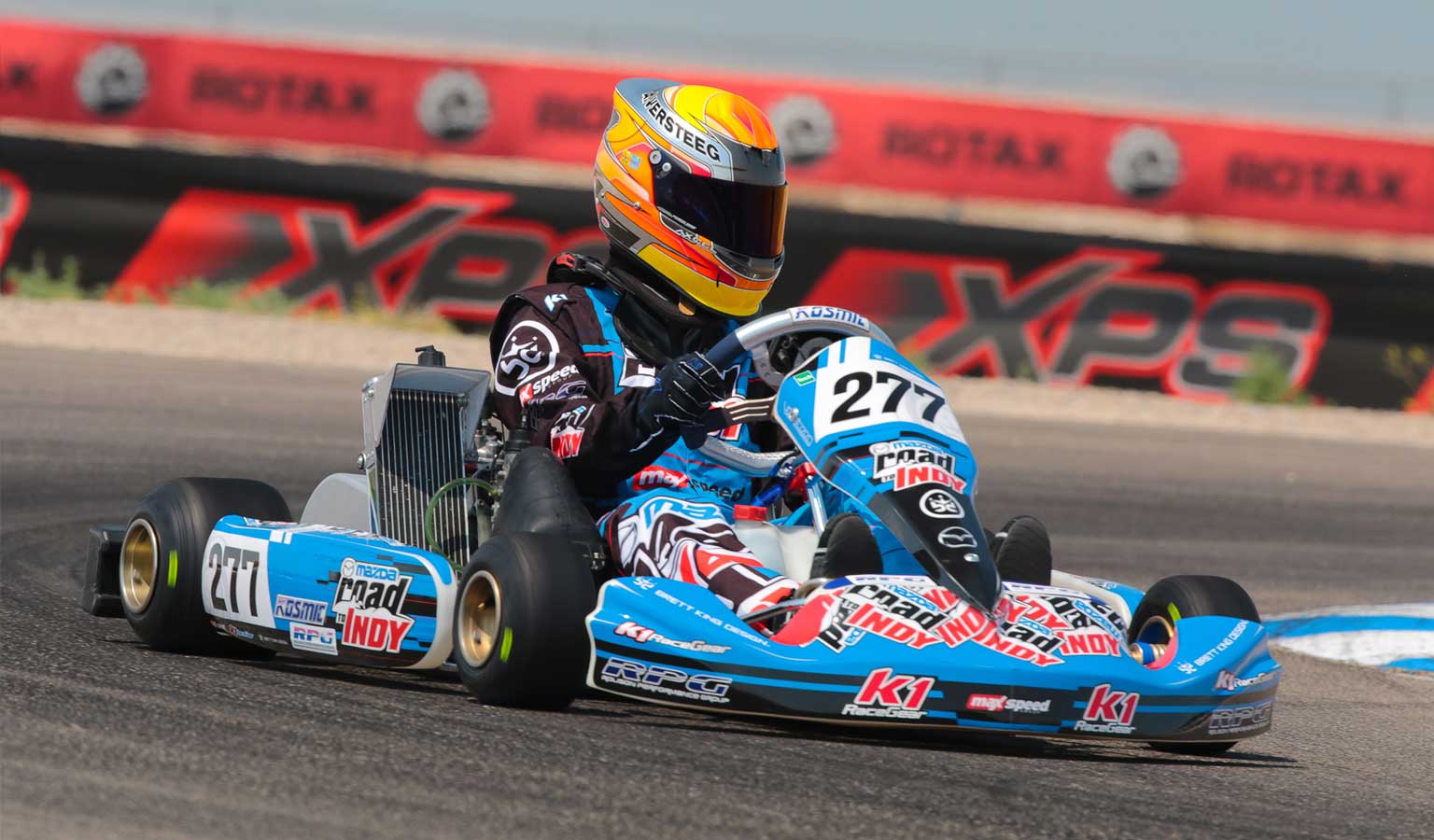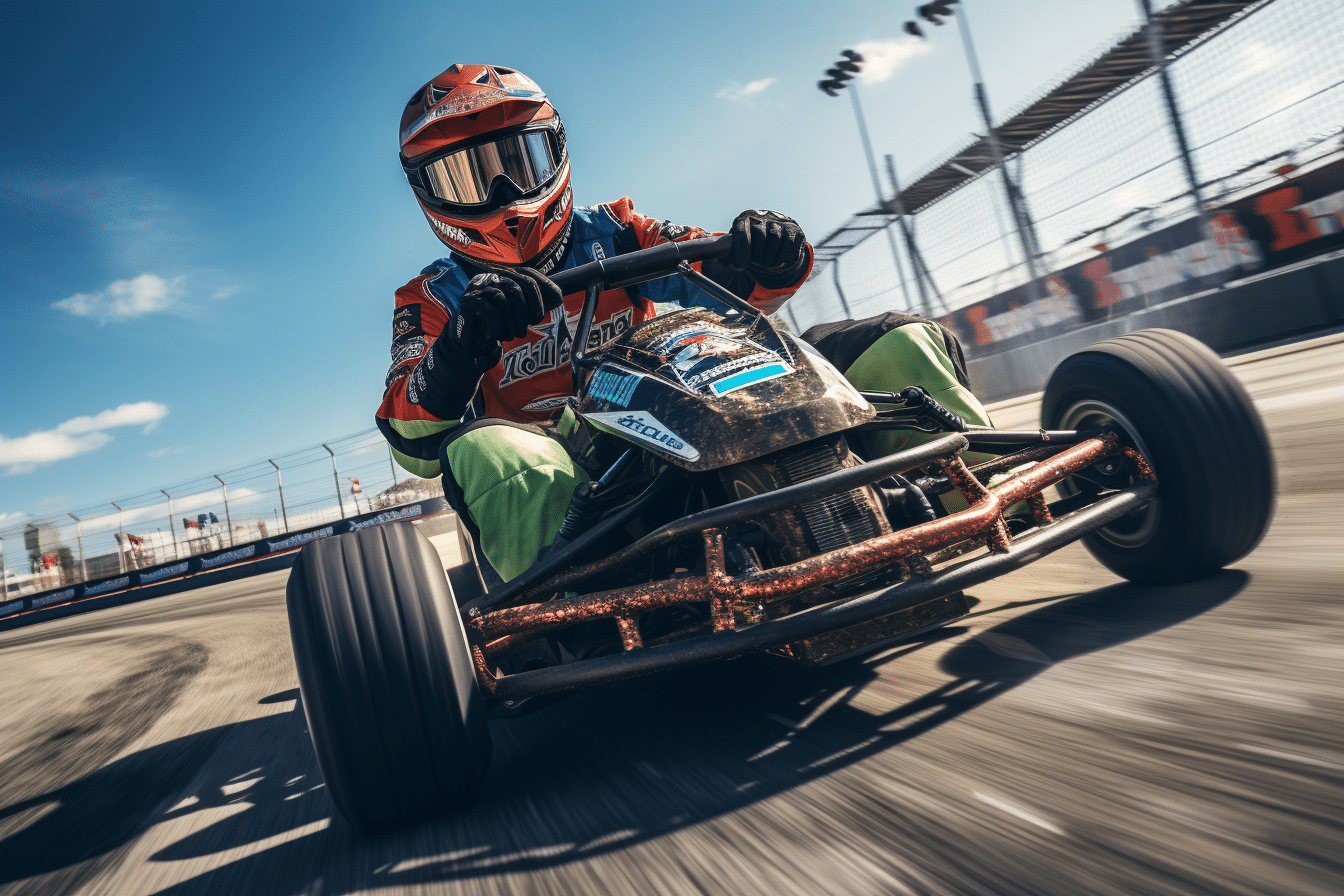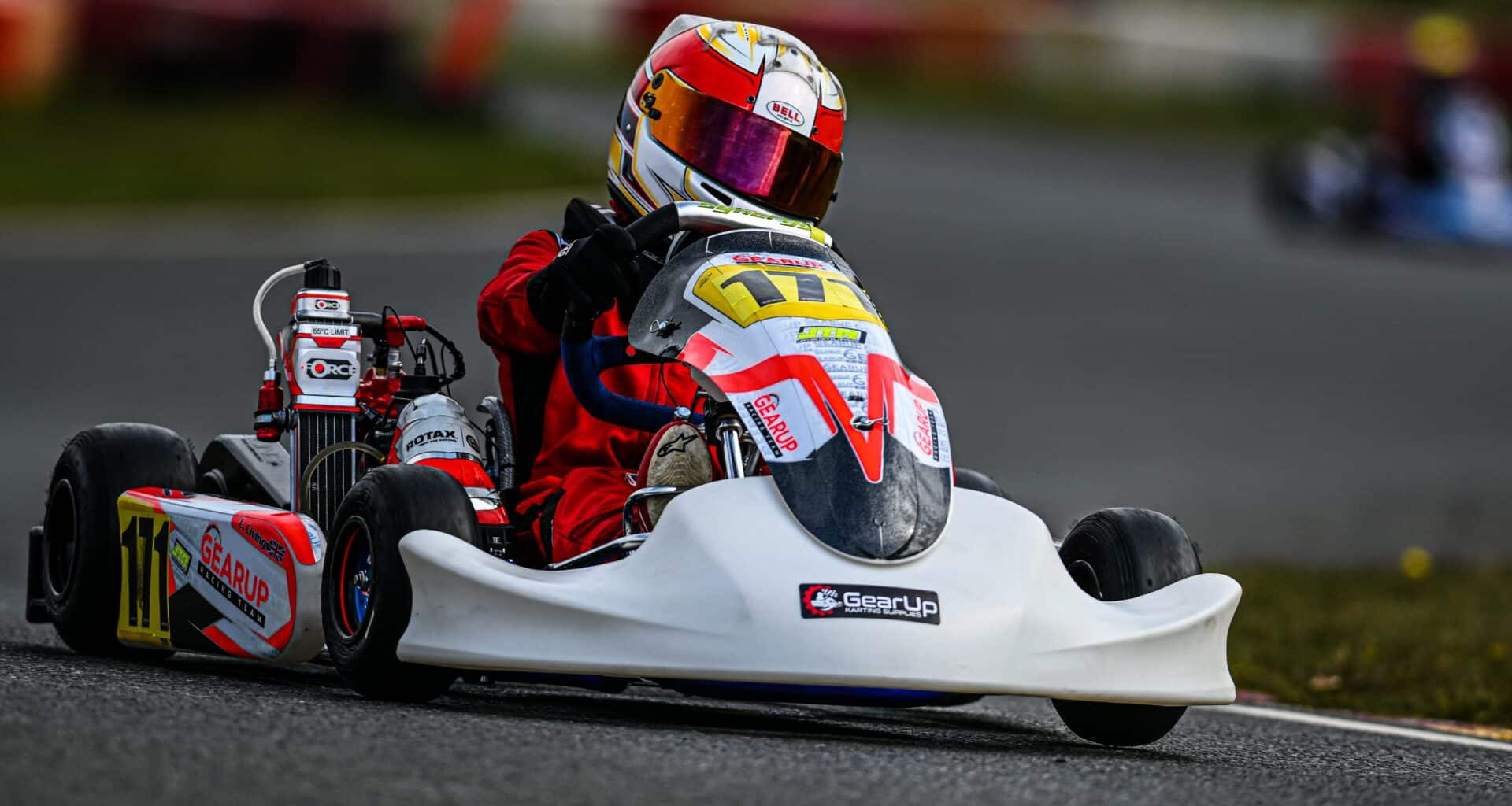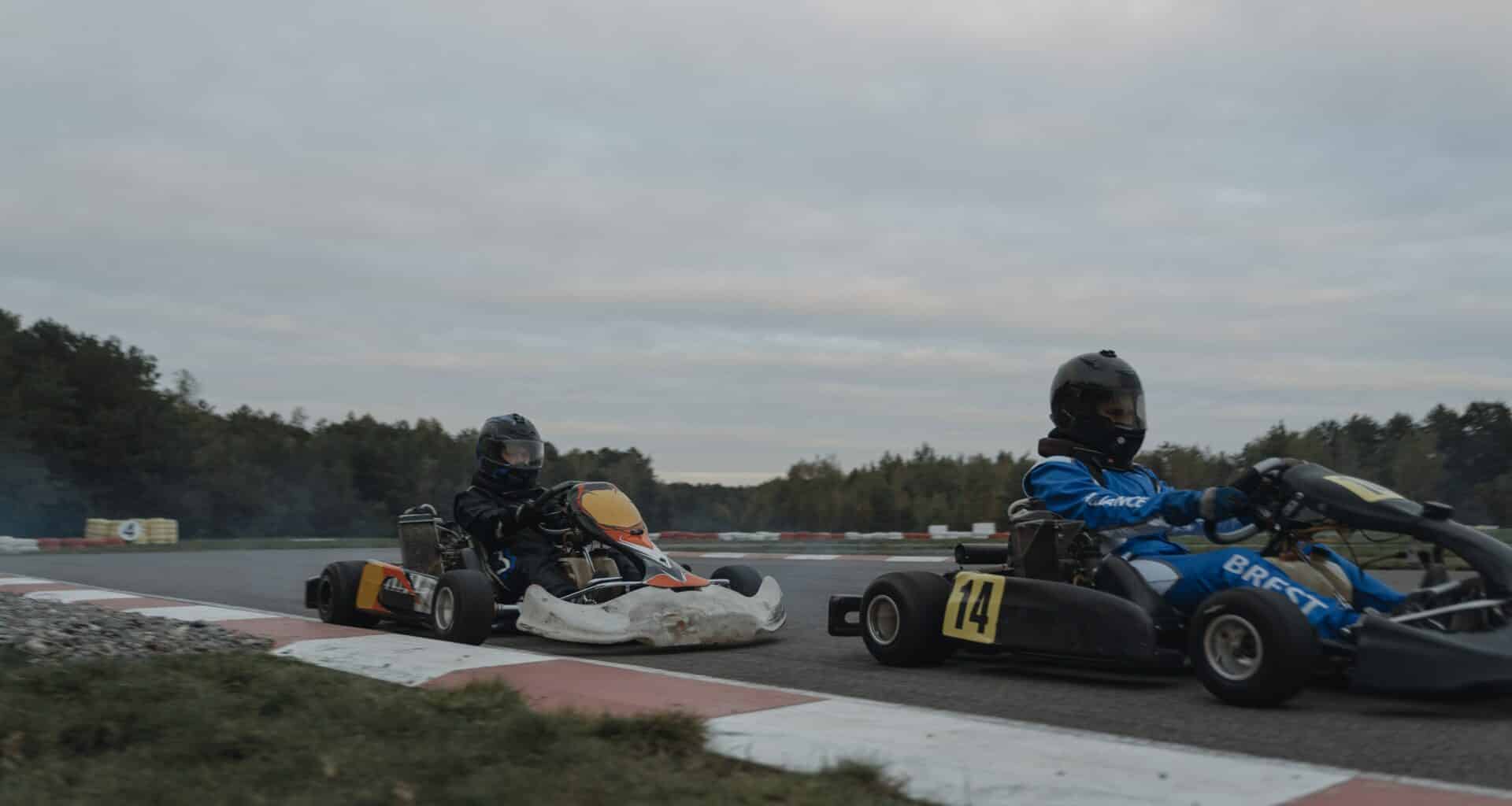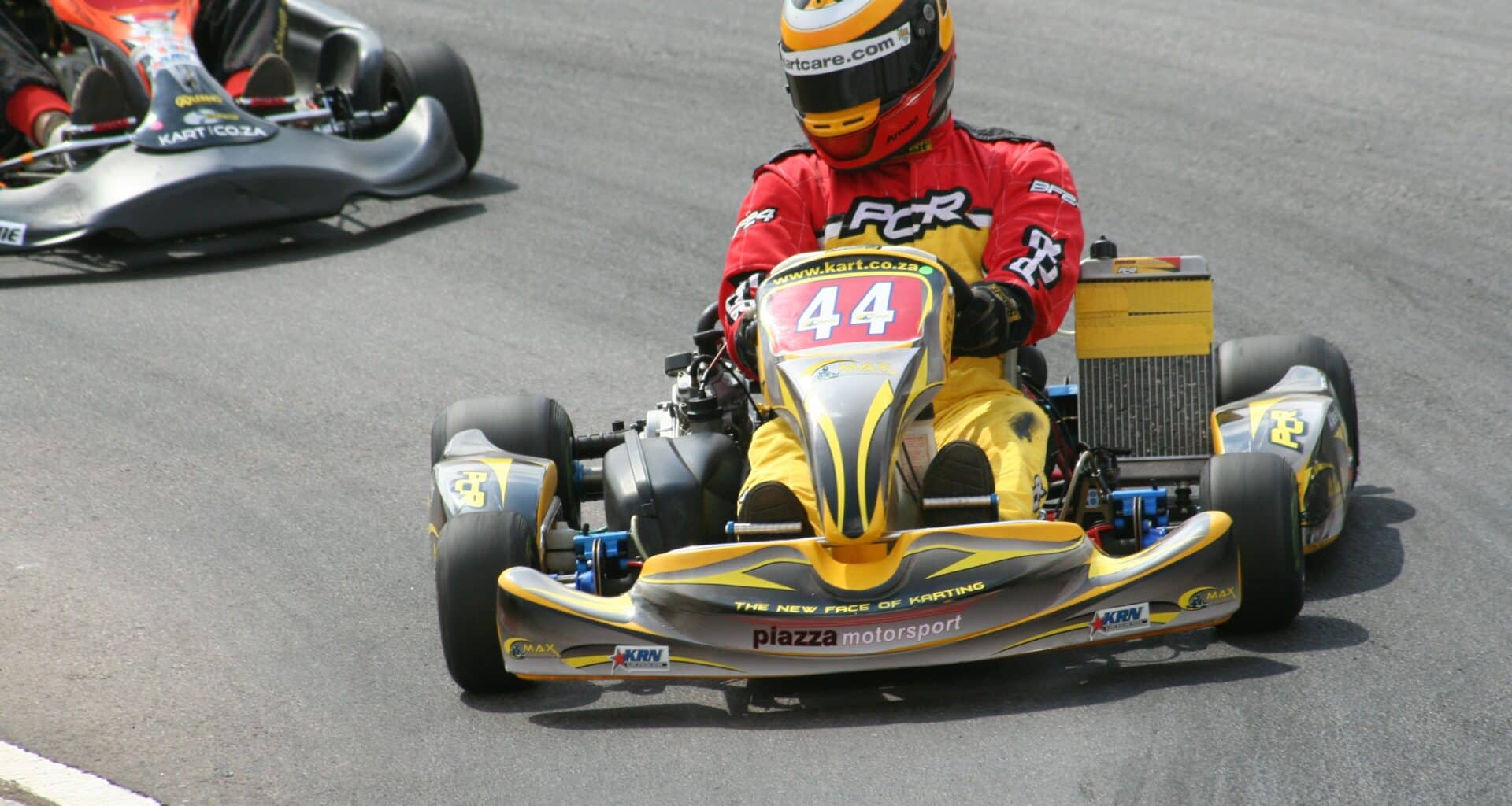Go-kart racing suits are a critical piece of safety gear for anyone involved in the sport of go-karting.
These specialized one-piece suits are engineered to provide protection for racers against abrasions, heat, flames, and other hazards in the event of an accident on the track.
Selecting the optimal go-kart racing suit is an important decision to maximize protection and comfort during driving.
Go-karting is an exhilarating motorsport, but carries inherent risks like any racing discipline. With open-wheeled vehicles reaching speeds over 100 mph on courses with minimal barriers, the chance of accidents and contact is ever-present.
This makes a properly fitted, high-quality racing suit an absolute necessity for any competitive or recreational go-kart driver.
When shopping for a go-kart racing suit, there are several key factors to take into account, such as materials, sizing, features, regulations, and cost.
With a wide selection of suits on the market meeting various standards and price points, it is essential to weigh all of these criteria when choosing the optimal suit for your individual needs and situation.
Table of Contents
Factors to Consider When Buying a Go-Kart Racing Suit
Material of the Suit
One of the most important considerations when selecting a racing suit is the type of materials used. The exterior fabric of the suit needs to offer substantial abrasion resistance to provide protection in the event of a crash while sliding across asphalt or dirt.
Popular materials include Cordura, leather, ballistic nylon, and occasionally Kevlar panels in high heat zones.
The interior liner of the suit should consist of fabrics designed to be soft, breathable, and moisture-wicking, such as polyester blends and lightweight cotton for maximum next-to-skin comfort.
Some high-end suits also incorporate Nomex, a flame-resistant meta-aramid material, or other proprietary fire-retardant fabrics for an added layer of heat and fire protection.
Size and Fit
Finding the optimal sizing and fit is crucial for both safety and performance when racing. A suit that is too loose can ride up, get caught on vehicle components, and reduce abrasion resistance.
An overly tight suit restricts movement, impacts driving posture, causes discomfort, and promotes fatigue.
Start by carefully measuring key body dimensions like chest, waist, hips, arm length, thighs, and calves per the sizing chart of the manufacturer.
Suits are available in a wide range of standard and custom sizes to dial in the ideal tailored fit. The suit should feel snug while allowing for a full range of motion. Seek professional guidance for sizing for children’s suits.
Design and Style
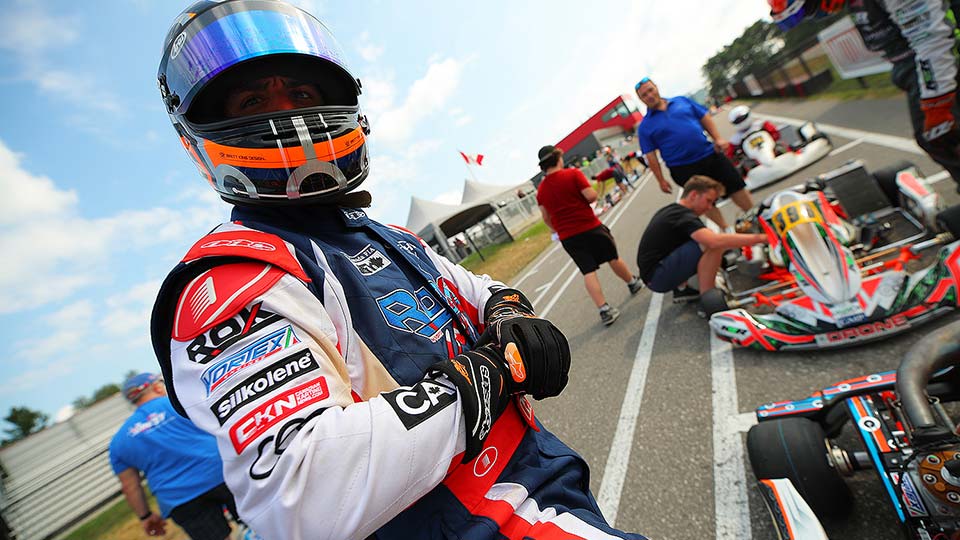
Go-karting suits come available in a myriad of colors, patterns, and graphic designs. Many racers choose suits to match the livery or branding of their karts, while others opt for simple and minimalist style. Stay away from bulky logos and designs that may interfere with harness belts or vehicle operation.
It’s wise to leave empty space on the upper chest, shoulders, and upper back of suit if you plan to sell sponsorship space for branding. If you foresee significant weight fluctuations, choose conservative two-tone designs over loud graphics spanning the entire suit. Ultimately, the style of your racing suit comes down personal preferences.
Safety Features
The safety technology engineered into a racing suit should be one of the most heavily weighted factors during selection. Ideally, high-end suits will incorporate multiple layers of abrasion-resistant fabrics, strategically placed impact foam or soft armor, stretch panels for flexibility, and ventilated mesh regions for breathability.
Many sanctioning bodies require suits to meet standardized safety criteria, with CIK-FIA Level 1 and Level 2 approval representing high-level certification. Level 2 suits pass more stringent guidelines on material strength, seam construction, and suite architecture. Seek out key features that match your experience level and risk factors.
Price Range
Go-karting suits range dramatically in cost from around $50 for basic recreational suits up to $700 or more for high-end professional models. Setting a budget ahead of time is wise. Focus first on finding a suit that offers adequate essential safety protections for your needs before assessing value-added comfort and performance extras.
Generally, more expensive suits will be constructed with higher-grade materials, integrate advanced safety technology, and provide greater durability over time. Look to find the intersection of quality of construction, critical safety features, and affordable pricing based on your budget.
In-depth Analysis of Top Go-Kart Racing Suits
Alpinestars KMX-9 V2: Detailed Review
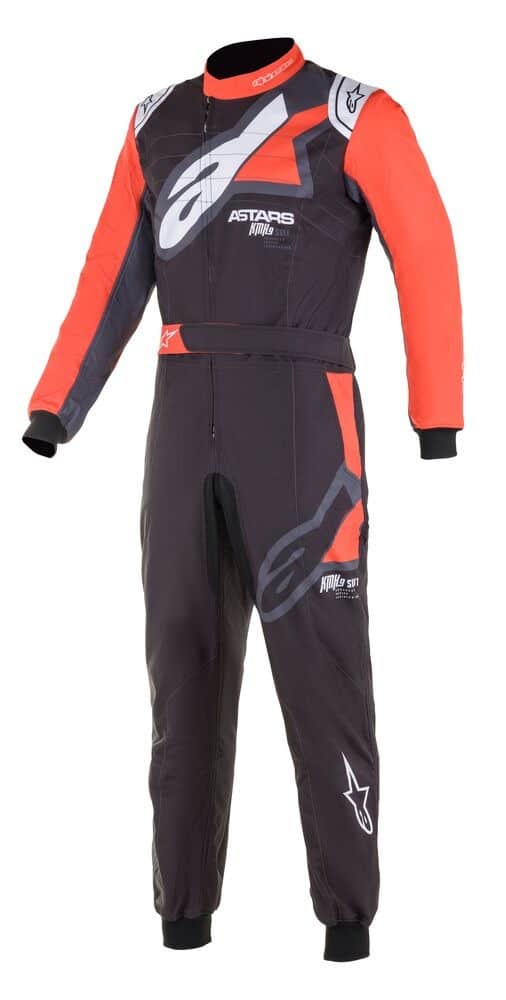
The Alpinestars KMX-9 V2 represents one of the most high-end go-karting suits available today. It carries CIK-FIA Level 2 certification, meaning it meets stringent standards for use in national and international racing events sanctioned by the global karting governing body. This top-tier approval comes from the premium construction and safety technology built into the suit.
The outer shell uses multiple layers of durableyet flexible Cordura fabric, providing advanced abrasion resistance to withstand the grueling demands of competitive racing. Highly breathable mesh paneling is strategically integrated along stress zones on the back, chest, arms, and legs to augment ventilation and cooling.
The inner liner features Alpinestars’ signature Vector material, an innovative fabric offering moisture-wicking performance to keep drivers cooler and more comfortable out on the track. The suit design incorporates pre-shaped anatomical sleeves and leg construction allowing for a greater range of motion while seated in the racing position.
Additionally, the suit boasts reinforced Double Poly-Fabric material on the back and bottom, the primary contact areas with the seat. This doubles down on durability and protection right where it’s needed most during intense driving. For premium safety, comfort, ventilation and flexibility, the Alpinestars KMX-9 V2 is hard to beat.
Sparco X-Light K: Detailed Review
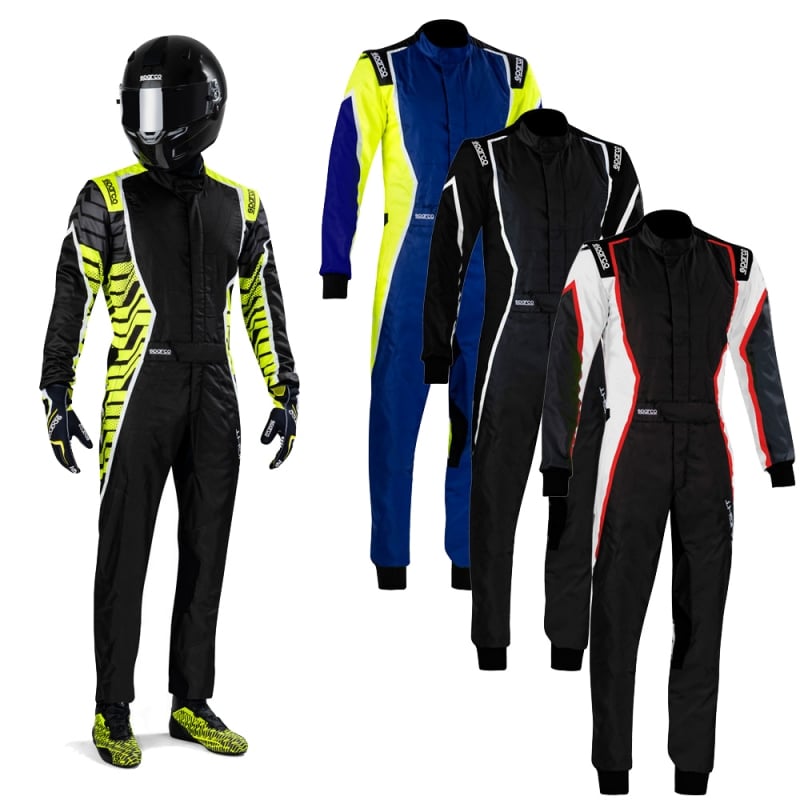
The Sparco X-Light K racing suit represents an exercise in lightweight design taken to the extreme. Weighing in at an astonishingly light 2.1 kg (4.6 lbs), it lives up to its name by providing world-class safety protection while leaving you feeling nearly naked.
The suit achieves this featherweight construction through the strategic use of ultra-thin yet strong three-layer Nomex fire-resistant fabric throughout the main body and sleeves. This provides thermal and flame protection that meets the Level 2 rating by CIK-FIA. Silicone grippers integrated into the lower legs and wrists secure the suit firmly in place while driving.
Safety is augmented by integrated knee and elbow padding zones providing supplemental impact absorption during crashes. The X-shape elastic shoulder construction, floating arm sleeves, and lumbar elastic panels all maximize flexibility and ergonomic comfort in the racing position without adding bulk.
For those seeking the pinnacle of lightweight performance and protection, the Sparco X-Light K delivers an unparalleled driving experience. Just be sure to try it on first, as the ultra-slim fit isn’t for everyone.
OMP KS-Art: Detailed Review
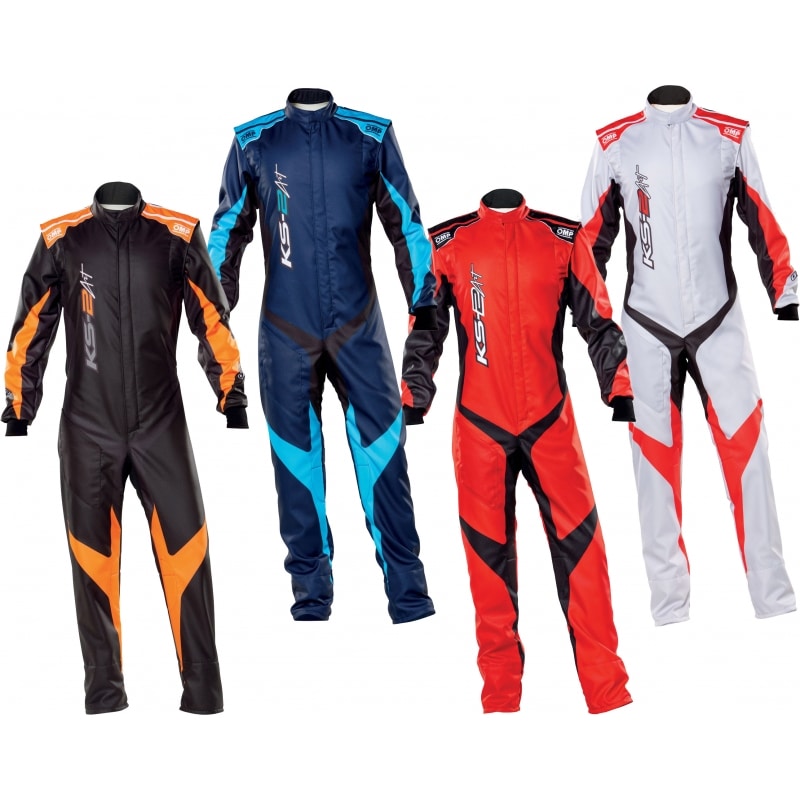
For those wishing to make a bold stylistic statement with their racing suit, the OMP KS-Art delivers with vibrant, flashy color schemes and designs. But flashy good looks aren’t all this suit brings to the table. The OMP KS-Art still maintains top safety ratings and construction to keep you protected out on the track.
The rugged exterior consists of durable DuPont Cordura fabric, providing excellent abrasion resistance. Critical areas like the back, bottom, crotch, and knees incorporate reinforced Tri-Layer material for added strength and durability. Shoulder and elbow foam padding provide impact cushioning in a crash.
The OMP KS-Art carries a CIK-FIA Level 2 certification, giving it the thumbs up for essentially all high-level karting events. The vibrant colors and wild designs offer a modern refreshing look compared to traditional muted karting suits. Express yourself with the OMP KS-Art.
RaceQuip SFI Suit: Detailed Review
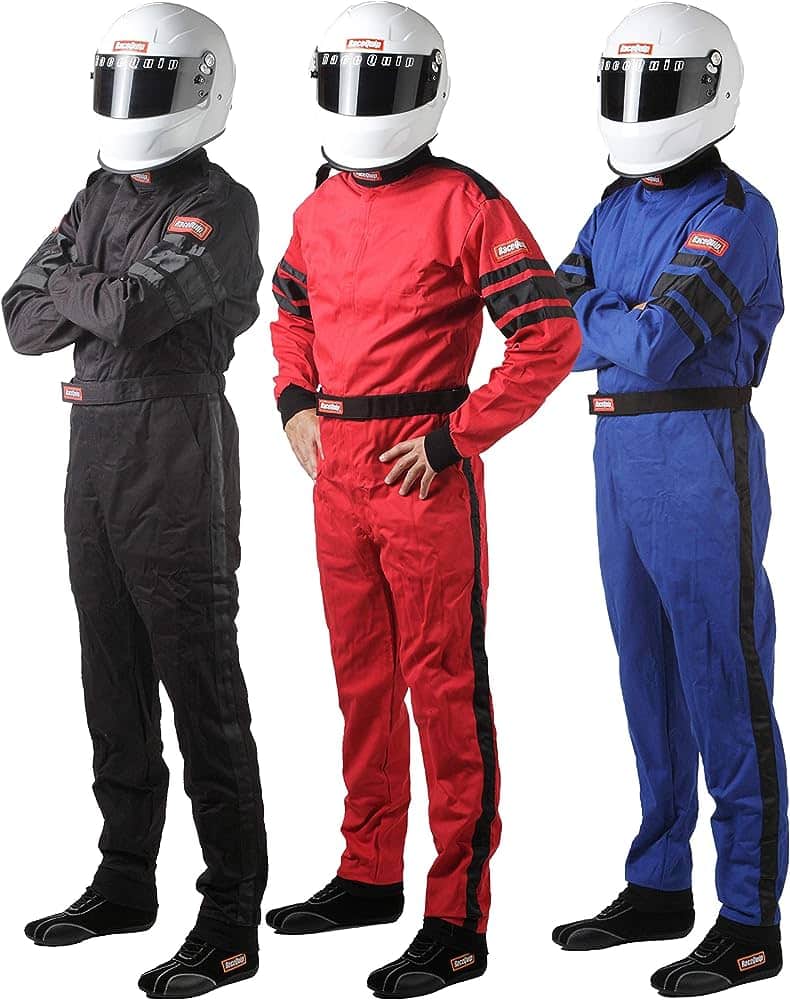
For those shopping for their first go-kart racing suit on a budget, the RaceQuip SFI suit delivers decent safety and protection while going easy on the wallet. Constructed of single-layer Pyrovatex fire-resistant fabric, it provides a baseline of heat and flame protection.
The simple design focuses on fundamentals like a velcro collar and belt for fit adjustment, large front zipper for easy donning, and two internal pockets for storage during driving. The material is thinner and offers less abrasion resistance compared to premium suits.
While it lacks official CIK-FIA racing certification, its SFI rating makes it legal for amateur racing and track days. Just don’t expect the same level of durability and safety as top-end suits. But for an affordable entry-level option, the RaceQuip delivers decent value.
The Importance of Choosing the Right Go-Kart Racing Suit
How A Suit Can Impact Your Performance
Beyond just providing protection, a proper racing suit can enhance comfort and ultimately improve driving performance. An ill-fitted suit that bunches, feels constricting, or exposes areas during movement negatively impacts concentration and control behind the wheel.
Features like ventilated mesh panels, moisture-wicking liners, and flexible mobility panels found in high-end suits actively cool the body, wick sweat, and promote free movement. This allows the driver to maintain focus without being distracted by physical discomfort or suit tightness.
An optimally fitted racing suit almost acts like a second skin, moving fluidly with your body without introduction restrictions or distractions. Find a suit that complements your natural posture and range of motion to give you a performance advantage on the track.
Safety Concerns: Fire and Abrasion Protection
Safety is the number one priority that a proper racing suit provides. During accidents, two of the biggest risks are abrasions from contact with the ground and burns from fire. Premium suits provide multilayered defenses against both of these hazards.
Tough outer fabrics like Cordura, Kevlar, and leather resist tearing while sliding across asphalt or dirt, preventing painful rashes and road burns. Integrated impact foam pads provide further cushioning during hard impacts with barriers or vehicles.
Inner linings of Nomex or proprietary fire-resistant materials provide a crucial few seconds of protection in case of explosions or fuel fires. This gives the driver precious time to exit the vehicle before sustaining burns. High-end suits save skin and lives.
Maintaining Your Go-Kart Racing Suit
Cleaning Tips for Go-Kart Racing Suits
Like any athletic wear, go-kart suits get soiled with grease, oil, grass stains, and sweat over time. Follow the care instructions from the manufacturer for washing and drying. Typically, gently machine washing on a cold delicate cycle with mild detergent is acceptable.
Always wash the suit separately from other garments to prevent abrasion damage and use an extra spin cycle to remove excess water. Never use bleach or other harsh chemicals. Air dry the suit out of direct sunlight and avoid machine drying, which can degrade fabrics over time.
How Often Should You Replace Your Suit?
With frequent use, plan to replace your go-kart racing suit approximately every 2-3 years. Signs that your suit needs replacing include worn out knees or seat, thinning or tears in the outer material, damaged zippers or collar, faded colors, and loss of elasticity in the fabrics.
Inspect your suit thoroughly after each use for new rips, holes, or tears, and immediately retire any suit with significant damage that exposes skin or compromises protection. Only race with a suit in excellent integrity to ensure it performs safely in the event of a crash.
Frequently Asked Questions
Can I Use a Car Racing Suit Instead of a Go-Kart Racing Suit?
It is not advisable to use a car racing suit in place of a purpose-built go-kart racing suit. Car racing suits are engineered first and foremost to withstand the intense heat and flames of an enclosed cockpit fire or explosion. They offer less optimized abrasion resistance for the open-cockpit nature of karting.
Many sanctioning bodies prohibit the use of car racing suits in karting events as they do not meet standardized abrasion protection and certification criteria. Opt for a racing suit designed specifically for go-karts for ideal safety.
How Do I Know If My Suit Fits Properly?
With your arms overhead in a reaching position, you should still have a comfortable range of motion without feeling any restrictions or tight pulling in the shoulders, chest, or back. When seated in a racing kart position, the suit should not feel excessively tight or pinch across the back and shoulder blades.
Move your limbs through your full range of motion to ensure the suit does not limit critical driving movements. Proper suits allow freedom of movement while keeping the fabric close to the body to prevent catching or abrasion in a crash.
Are All Go-Kart Racing Suits Fire-Resistant?
While many quality go-kart racing suits incorporate some level of flame-resistant fabrics, not all suits are inherently fireproof. Cheaper suits often forgo expensive proprietary materials in favor of basic fabrics lacking thermal protection.
Always verify the specific materials and fire rating before purchasing a suit. Ideally look for mentions of materials like Nomex, Kevlar, or Pyrovatex, or certification standards like SFI or CIK-FIA that mandate inclusion of fire-resistant technology. Don’t assume heat protection is built in.
Conclusion
Finding the optimal go-kart racing suit involves carefully weighing factors of safety, comfort, performance, style, and budget. Prioritize protection first based on your experience level, then accessorize with premium features as budget allows.
With prudent selection, a quality suit lasts years and provides invaluable protection in the event of a crash.
